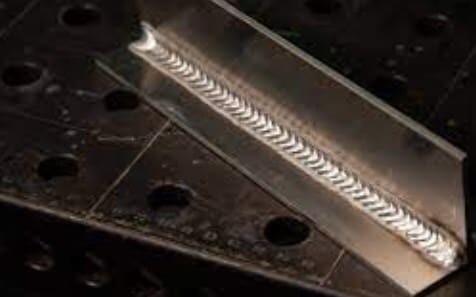Welding is a fundamental process in manufacturing, construction, and various industries, playing a crucial role in joining metals to create structures, machinery, and other essential items. Among the numerous welding techniques available, GMAW (Gas Metal Arc Welding), also known as Metal Inert Gas (MIG) welding, and TIG (Tungsten Inert Gas) Welding are two of the most widely used methods. Each has its unique advantages, applications, and challenges, making them suitable for different projects and industries.
This article delves into the differences between GMAW and TIG welding, exploring their processes, applications, advantages, and limitations. It also includes a detailed comparison table to help welding professionals and businesses make informed decisions for their projects.
I. What is GMAW Welding?
GMAW, also known as MIG (Metal Inert Gas) welding, is a semi-automatic welding process that uses a consumable wire electrode and an inert gas to shield the weld area from atmospheric contamination. This method is known for its speed, efficiency, and versatility, making it one of the most popular welding techniques in industries such as automotive, construction, and manufacturing.

1) How GMAW Welding Works:
Equipment Setup: A welding gun is connected to a wire feeder, which supplies a continuous wire electrode. The gun is also connected to a power source and a gas supply.
Welding Process: The welder presses the gun's trigger, releasing the wire electrode, which melts and fuses with the workpiece under the protection of inert gas (e.g., argon or helium).
Shielding: The inert gas creates a protective atmosphere, preventing contamination and ensuring a clean weld.
2) Advantages of GMAW Welding:
High Speed: GMAW is faster than TIG welding, making it ideal for high-volume production.
Ease of Use: It is relatively easy to learn and operate, even for novice welders.
Versatility: Suitable for welding a variety of metals, including steel, aluminum, and stainless steel.
Cost-Effective: The equipment and consumables are relatively affordable compared to TIG welding.
3) Limitations of GMAW Welding:
Less Precision: It is less suitable for intricate or precision welding tasks.
Post-Weld Cleanup: The process can generate slag and spatter, requiring additional cleanup.
Outdoor Use: It is less effective in windy or open environments due to the risk of shielding gas being blown away.
II. What is TIG Welding?
TIG welding, also known as GTAW (Gas Tungsten Arc Welding), is a manual welding process that uses a non-consumable tungsten electrode to create a weld. The process is highly precise and produces high-quality welds, making it the preferred choice for critical applications in industries such as aerospace, automotive, and food processing.
 effect.jpg)
1) How TIG Welding Works?
Equipment Setup: The welder uses a TIG torch with a tungsten electrode, a power source, and a shielding gas supply.
Welding Process: The welder manually feeds a filler material (if needed) while maintaining the arc between the tungsten electrode and the workpiece.
Shielding: Inert gas (e.g., argon or helium) protects the weld pool from contamination.
2) Advantages of TIG Welding
High Precision: Ideal for intricate and critical joints that require high accuracy.
Aesthetic Finish: Produces clean, slag-free welds with minimal spatter.
Material Versatility: Suitable for welding thin materials and exotic metals like titanium and copper.
Strong Welds: TIG welds are known for their superior strength and durability.
3) Limitations of TIG Welding:
Slow Process: TIG welding is time-consuming and labor-intensive.
High Skill Level: Requires extensive training and experience to master.
High Equipment Cost: The equipment and consumables are more expensive compared to GMAW.
Limited Automation: Not easily automated, making it less suitable for high-volume production.
III. GMAW Welding vs. TIG Welding: Key Differences
To help professionals decide which welding technique is best for their projects, we have compiled a detailed comparison table below:
| Feature | GMAW Welding | TIG Welding |
| Process Type | Semi-automatic | Manual |
| Electrode | Consumable wire electrode | Non-consumable tungsten electrode |
| Shielding Gas | Inert gas (argon, CO2, or mix) | Inert gas (argon or helium) |
| Speed | High speed, ideal for production | Slow process, better for precision work |
| Ease of Use | Easy to learn and operate | Requires skill and experience |
| Weld Quality | Easy to learn and operate | High-quality, clean, and aesthetically pleasing welds |
| Material Compatibility | Suitable for steel, stainless steel, and aluminum | Ideal for thin materials, exotic metals, and critical joints |
| Cost | Cost-effective equipment and consumables | Higher equipment and consumable costs |
| Automation | Easily automated | Not easily automated |
| Applications | Automotive, construction, high-volume production | Aerospace, food processing, artistic welding, and repair work |
| Outdoor Use | Less effective in windy conditions | Better suited for controlled environments |
IV. When to Use GMAW Welding or TIG Welding
1) When to Use GMAW Welding
GMAW welding is the preferred choice in the following scenarios:
High-Volume Production: GMAW is faster and more efficient for large-scale projects.
Thick Materials: It is suitable for welding thicker materials (above 1/4 inch).
Cost Sensitivity: When budget is a concern, GMAW is more cost-effective.
Outdoor or Rough Conditions: While not ideal, GMAW can be used in outdoor settings with proper shielding.
2) When to Use TIG Welding
TIG welding is the better option in the following situations:
Precision Work: For intricate joints or thin materials that require high accuracy.
Aesthetic Requirements: When a clean, slag-free finish is essential.
Critical Applications: In aerospace, medical, or food processing industries, where weld quality is paramount.
Exotic Metals: For welding materials like titanium, copper, or aluminum alloys.
V. Tips for Choosing the Right Welding Technique
Project Requirements: Assess the project's needs in terms of speed, precision, and material type.
Skill Level: Consider the expertise of your welding team. GMAW is easier to learn, while TIG requires more skill.
Budget: Evaluate the cost of equipment, consumables, and labor for both techniques.
Weld Quality: Determine whether the project requires high-strength, clean welds or if standard weld quality is sufficient.
Conclusion
Both GMAW and TIG welding are essential techniques in the welding industry, each with its strengths and weaknesses. GMAW welding excels in high-speed, cost-effective applications, while TIG welding is ideal for precision, critical joints, and aesthetic finishes. By understanding the differences and choosing the right technique for your project, you can ensure superior weld quality, efficiency, and cost-effectiveness.
For businesses and professionals seeking advanced welding solutions, Megmeet Welding Technology offers a wide range of high-quality welding equipment and expertise to meet your specific needs. Whether you're working on large-scale production or intricate repair work, Megmeet provides the tools and resources to help you achieve exceptional results.
Related articles:
1. Differences between CO2 Gas Welding, Manual Welding, and TIG Welding
2. Advantages of Pulse Spray Transfer in GMAW Welding
3. GMAW vs. CO2 Welding: A Comparison of Two Metal Arc Welding Processes
4. What is GMAW (MIG Welding) & How Does it Work?
5. Top 10 GMAW Welding Machine Brands in the World (in 2023)




 effect.jpg)
